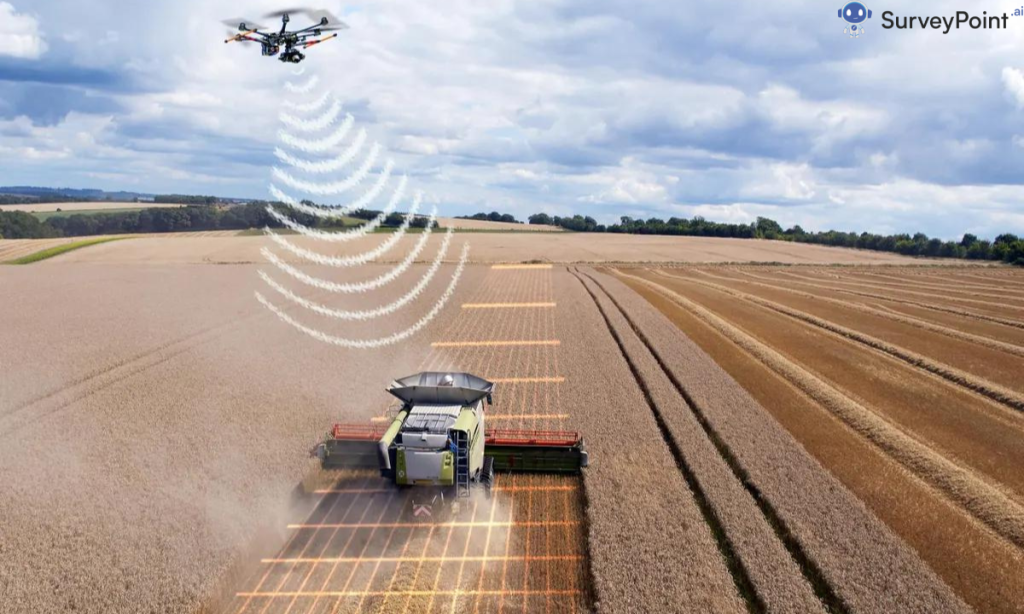
Agriculture is undergoing a technological transformation that is enhancing productivity, sustainability, and efficiency. With the world’s population continually growing, innovative solutions are essential to meet the increasing demand for food. Here’s a look at some of the groundbreaking technologies that are revolutionizing agriculture.
Precision Agriculture: Farming with Accuracy
What it is: Precision agriculture uses advanced tools like GPS, sensors, and drones to gather and analyze data about crops and soil.
How it helps: This approach allows farmers to apply water, fertilizers, and pesticides more accurately, reducing waste and increasing crop yields. By monitoring soil conditions, moisture levels, and plant health, farmers can make better-informed decisions. Drones, for instance, can quickly survey large fields to detect issues like pest infestations or nutrient deficiencies early on.
IoT in Agriculture: Connecting the Field
What it is: The Internet of Things (IoT) refers to a network of interconnected devices that collect and exchange data.
How it helps: In agriculture, IoT devices such as soil sensors, weather stations, and smart irrigation systems provide real-time data to farmers. This connectivity allows for precise irrigation management, ensuring crops receive the right amount of water at the right time. Monitoring soil moisture, temperature, and humidity helps optimize growing conditions, conserve water, and enhance crop health.
Vertical Farming: Growing Upwards
What it is: Vertical farming involves cultivating crops in stacked layers, often in controlled indoor environments.
How it helps: This innovative method uses less land and water compared to traditional farming. By controlling environmental factors like light, temperature, and humidity, vertical farms can produce crops year-round, regardless of external weather conditions. This technology is particularly beneficial in urban areas where space is limited. Additionally, vertical farming reduces the need for pesticides and herbicides, resulting in healthier produce.
Blockchain: Ensuring Transparency and Traceability
What it is: Blockchain is a decentralized digital ledger that securely records transactions.
How it helps: In agriculture, blockchain enhances supply chain transparency and traceability. Consumers can trace the journey of their food from farm to table, ensuring its authenticity and quality. For farmers, blockchain streamlines transactions, reduces fraud, and ensures fair pricing by providing a transparent record of sales and payments. This technology can also help manage contracts and ensure compliance with standards.
Biotechnology and Genetic Engineering: Enhancing Crop Resilience
What it is: Biotechnology uses living organisms to develop products, while genetic engineering involves modifying the DNA of organisms.
How it helps: These technologies create crops that are more resistant to pests, diseases, and extreme weather conditions. Genetically modified organisms (GMOs) can have higher yields and better nutritional content. Biotechnology also helps produce biofertilizers and biopesticides, reducing the need for chemical inputs and promoting sustainable farming practices. For example, crops can be engineered to grow in poor soil conditions, expanding agricultural possibilities.
Autonomous Machinery: Automating Farm Work
What it is: Autonomous machinery includes robots and self-driving tractors that perform agricultural tasks without human intervention.
How it helps: These machines can plant, weed, and harvest crops more efficiently than human labor. Operating around the clock, they increase productivity and reduce labor costs. Autonomous machinery performs tasks with greater precision, minimizing damage to crops and soil. Self-driving tractors, for instance, can plow fields with exact precision, ensuring every part of the field is used effectively.
Climate-Smart Agriculture: Adapting to Change
What it is: Climate-smart agriculture involves practices and technologies that help farmers adapt to changing climate conditions.
How it helps: By using drought-resistant crops, efficient irrigation systems, and soil conservation techniques, farmers can maintain productivity even in adverse weather conditions. Climate-smart agriculture focuses on reducing greenhouse gas emissions, promoting sustainable farming practices, and improving resilience to climate change. Practices like using cover crops can prevent soil erosion and improve soil health, making farms more resilient to extreme weather events.
Conclusion
The integration of new technologies is transforming agriculture, making it more efficient, sustainable, and productive. Precision agriculture, IoT, vertical farming, blockchain, biotechnology, autonomous machinery, and climate-smart practices are leading the way in this transformation. By embracing these innovations, farmers can increase their yields and contribute to a more sustainable and food-secure future. The future of farming is here, and technology is at its forefront. For more information checkout- surveypoint.ai




